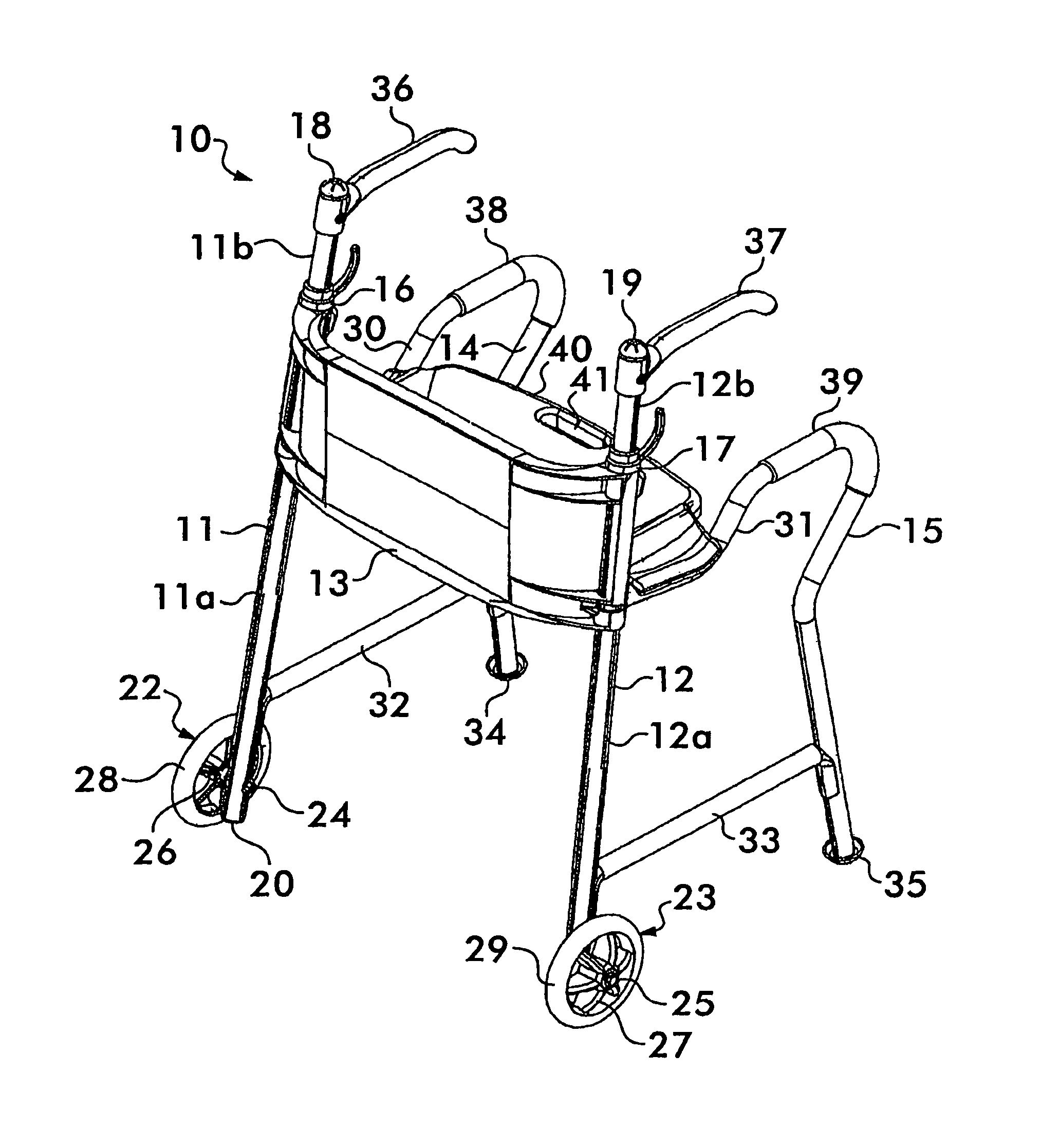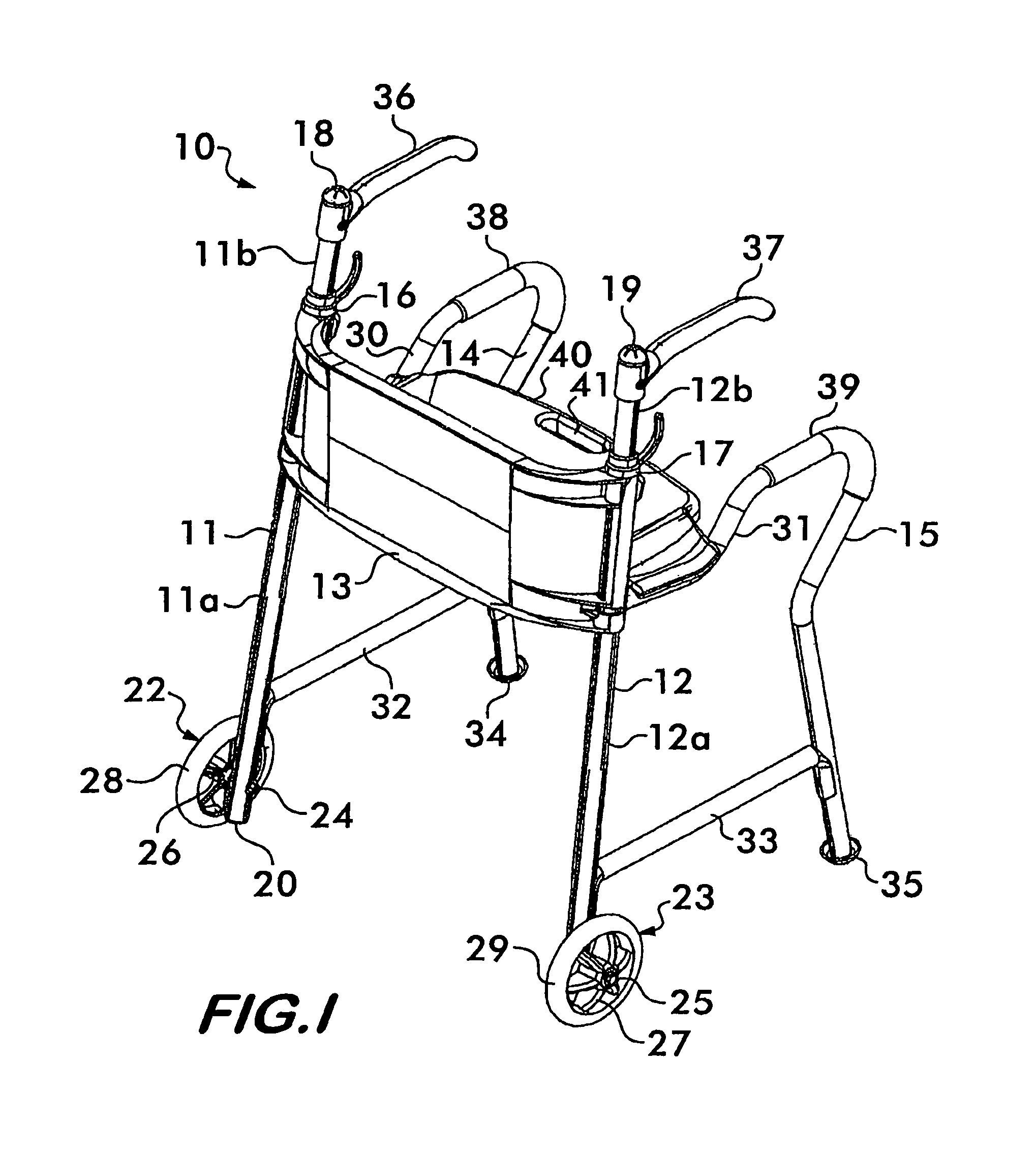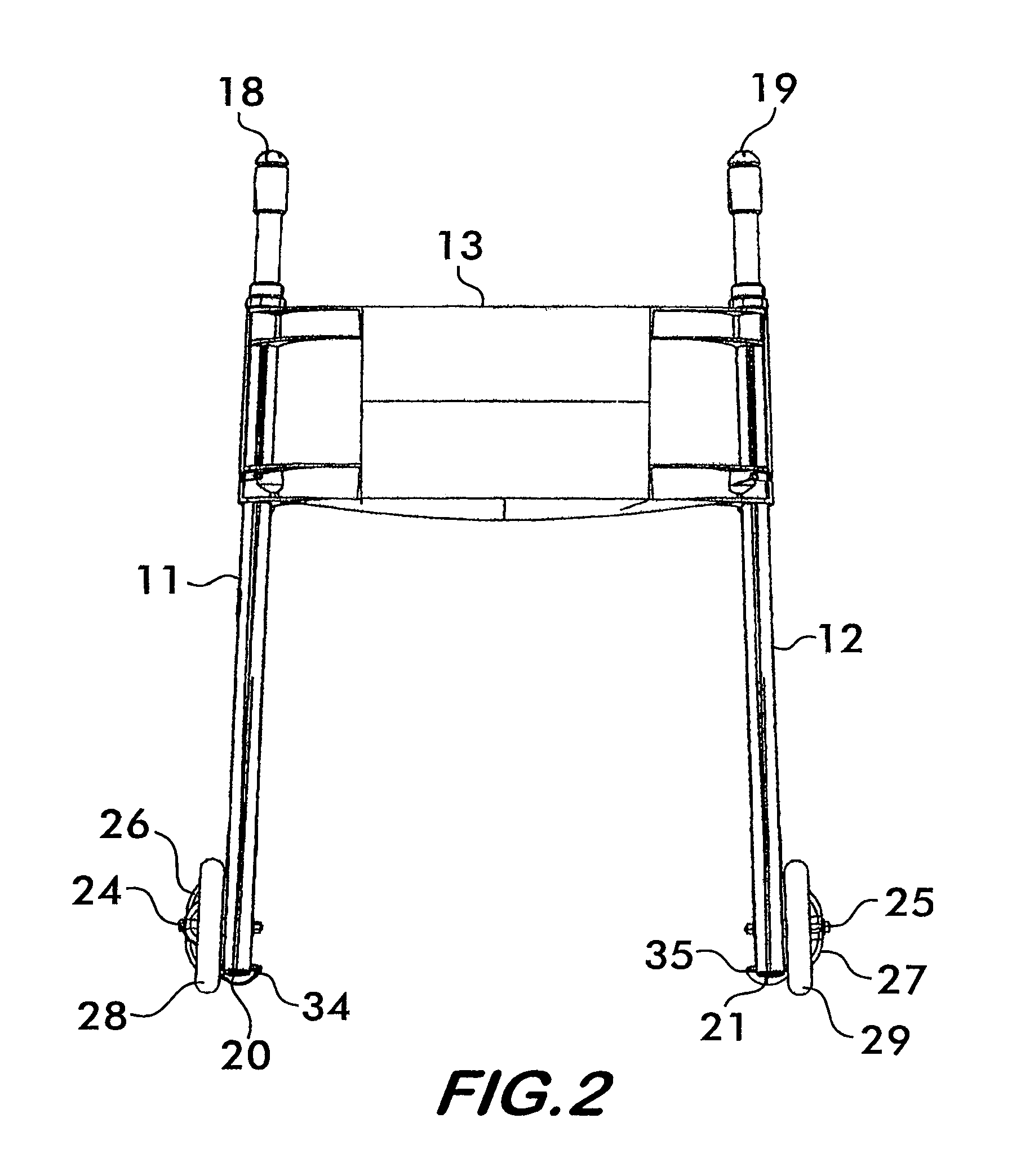Walker
a technology for assisting devices and walker's hands, which is applied in the direction of cardiovascular exercise devices, gymnastic exercise, sport apparatus, etc., can solve the problems of disadvantageous torque on the wrist, complicated and expensive devices such as tilting chairs and the like, and achieve the effect of being easy to grasp
- Summary
- Abstract
- Description
- Claims
- Application Information
AI Technical Summary
Benefits of technology
Problems solved by technology
Method used
Image
Examples
Embodiment Construction
[0026]The present invention provides a walker configured for assisting a user in walking as well as in rising from and lowering to a seated position which has a number of advantages both in manufacture and in use. The walker comprises a three-sided frame having a front section and two side sections which define a space to be occupied by a user during use of the walker in standing or walking. The frame of the walker comprises a pair of front vertical supports which are spaced apart and connected by a rigid cross-piece positioned between the front vertical supports, and a pair of rear vertical supports connected to the front vertical supports by at least one pair of rigid connectors. In an alternative embodiment, the walker comprises two-sided frame having a single front vertical support and a pair of rear vertical supports attached to the single front vertical support which define a triangular space to be occupied by a user during use of the walker in standing or walking. While the d...
PUM
 Login to View More
Login to View More Abstract
Description
Claims
Application Information
 Login to View More
Login to View More - R&D
- Intellectual Property
- Life Sciences
- Materials
- Tech Scout
- Unparalleled Data Quality
- Higher Quality Content
- 60% Fewer Hallucinations
Browse by: Latest US Patents, China's latest patents, Technical Efficacy Thesaurus, Application Domain, Technology Topic, Popular Technical Reports.
© 2025 PatSnap. All rights reserved.Legal|Privacy policy|Modern Slavery Act Transparency Statement|Sitemap|About US| Contact US: help@patsnap.com



